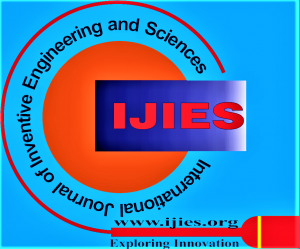![]()
New Mathematical Models and Analysis of Affixes for High-Quality Computer Translation from English into Uzbek, an Agglutinative Language Belonging to the Turkic Language Family
Vazira Bekova
Vazira Bekova, Department of Software Engineering and Artificial Intelligence, National University of Uzbekistan, Tashkent, Uzbekistan, Parkent District, Tashkent Region, Uzbekistan.
Manuscript received on 01 September 2025 | Revised Manuscript received on 12 September 2025 | Manuscript Accepted on 15 September 2025 | Manuscript published on 30 September 2025 | PP: 12-21 | Volume-12 Issue-9, September 2025 | Retrieval Number: 100.1/ijies.H112312090925 | DOI: 10.35940/ijies.H1123.12090925
Open Access | Editorial and Publishing Policies | Cite | Zenodo | OJS | Indexing and Abstracting
© The Authors. Blue Eyes Intelligence Engineering and Sciences Publication (BEIESP). This is an open access article under the CC-BY-NC-ND license (http://creativecommons.org/licenses/by-nc-nd/4.0/)
Abstract: The relevance of the topic lies in the fact that, to create a machine translation program from English to Uzbek based on new mathematical models constructed on an expandable input language and through the morphological analysis of noun-tonoun derivational affixes in the noun word class, it is first necessary to study the degree of correspondence of affixes across word classes in both languages. This article presents a detailed theoretical discussion with examples on this issue. Thoughts are expressed on creating high-quality computer translation from English into Uzbek, which belongs to the Turkic language family as an agglutinative language that has not been sufficiently studied. Based on new mathematical models, the correspondence percentages between roots and affixes are provided. When affixes do not match, the translation of the input word’s affix into the output word is addressed according to mathematical models developed for achieving semantically correct translation. The article also provides directions for addressing existing problems and resolving semantic inaccuracies. Furthermore, the necessity of constructing new mathematical models for both languages is considered, taking into account the rich morphology and affixation of Uzbek, as well as the rule of dividing morphemes for translating words belonging to each word class into another natural language. The work is aimed at eliminating meaninglessness and abstractness in translating scientific texts from Uzbek into English. Proposals are put forward for creating a computer translation program based on new mathematical models. Additionally, the article explores the feasibility of accurately capturing grammatical differences between the two languages through a mathematical model comprising morphological, syntactic, and semantic transfer stages. Moreover, considering the rich morphology and affixation of Uzbek and the morpheme division rule for translating words belonging to each word class, as an experiment, the architecture, components, and implementation stages of a new rule-based mathematical model were used in the automatic translation process between Uzbek and English.
Keywords: Machine Translation, Natural Language, Expandable Input Language, Input Text, Output Text, Computer Translation, English Language, Uzbek Language, Noun Word Class, Noun-Forming Affixes from Nouns, Mathematical Model, New Mathematical Models of Words, Weight, Young Researchers (By Fields of Specialization), University Teachers (PPS). Ministries and Agencies, Higher Education Institutions (HEIs), Clusters, Industry Employers, International Organisations.
Scope of the Article: New Programming Models
